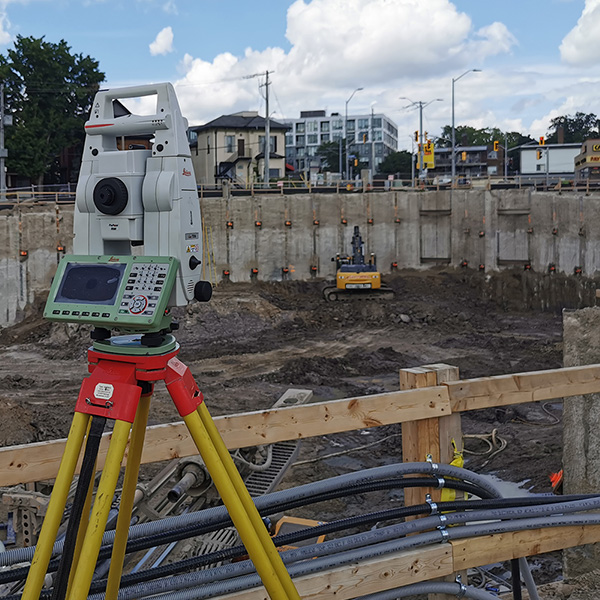Specializing in civil, structural support and geostructural applications, RWH utilizes the latest precision monitoring techniques and develops monitoring programs to better understand project performance throughout the construction process.
Through our practical knowledge and active project involvement, RWH is able to maintain a high level of service to our clients by minimizing design changes and anticipating project challenges.
RWH provides site specific geotechnical review and design for geostructural systems.
RWH’s team of skilled surveyors, engineers, and project managers allows us to effectively manage complex monitoring projects and assist our clients in tracking the performance of their project. RWH provides monitoring services at all stages of construction to help our clients mitigate risk.
Each project we undertake is tailored with a unique, project specific, precision monitoring program to meet the needs of our clients.

Total station monitoring is completed by placing reflective targets or prisms that are surveyed onsite as excavation or construction activities proceed. Precision reading accuracy is with a +/-2mm.
Inclinometers are installed to monitor the subsurface ground movements below the depth of excavation, which can provide better insight of the expected shoring performance and early indication of unexpected performance. Inclinometers are installed with casing or boreholes, and a probe is lowered and raised at uniform intervals to monitor subsurface ground movements over time.
These are traditional monitoring techniques used to review the performance of the temporary shoring system, ground movements and/or surrounding infrastructure are within the expected limits. However, they can be used in multiple applications.
Total station monitoring is completed by placing reflective targets or prisms that are surveyed onsite as excavation or construction activities proceed. Precision reading accuracy is with a +/-2mm.
Inclinometers are installed to monitor the subsurface ground movements below the depth of excavation, which can provide better insight of the expected shoring performance and early indication of unexpected performance. Inclinometers are installed with casing or boreholes, and a probe is lowered and raised at uniform intervals to monitor subsurface ground movements over time.
These are traditional monitoring techniques used to review the performance of the temporary shoring system, ground movements and/or surrounding infrastructure are within the expected limits. However, they can be used in multiple applications.
Automated monitoring uses a survey total stations to measure a series of reflective targets or prisms on a continuous basis throughout a construction project. RWH has recently added the use of in-place inclinometers to our monitoring instrumentation program to expand our automated services.
Instrumentation is installed on site to remain on a full-time basis during construction and real-time data is recorded and reported to an online platform. This method of monitoring is typically used on projects involving sensitive infrastructure in the influence of the excavation, such as railway tracks, where prompt notification any undesirable movement or change in performance is imperative to mitigating risk.
RWH is actively involved in an extensive variety of monitoring projects with challenging scopes and varying instrumentation needs.
Below are a few examples of additional monitoring techniques and services RWH offers and have been utilized on past projects:
RWH continues to identify strategic opportunities to utilize and invest in new technologies to streamline current processes and provide the best monitoring program to our projects and clients.